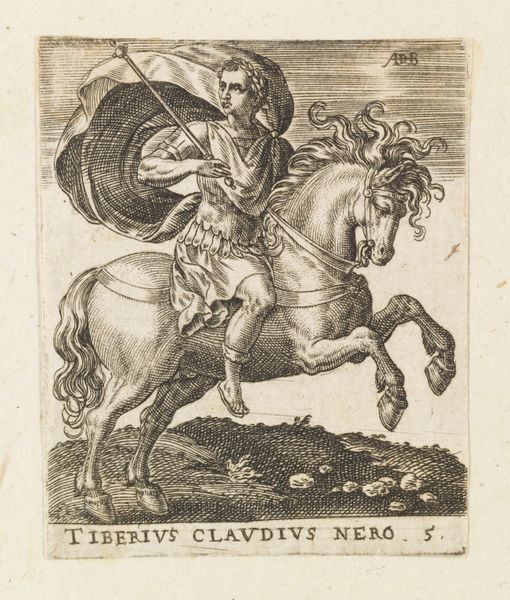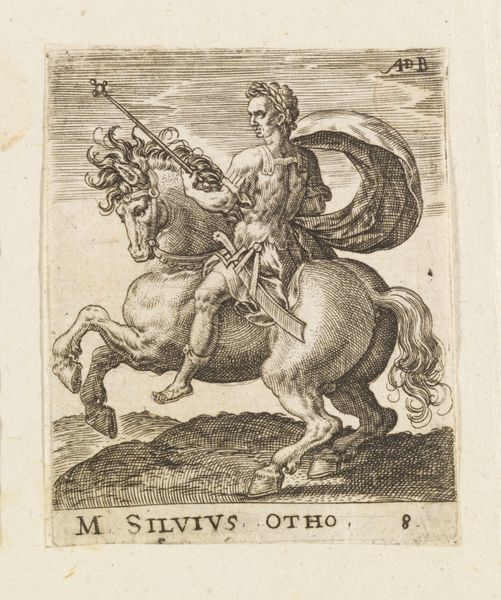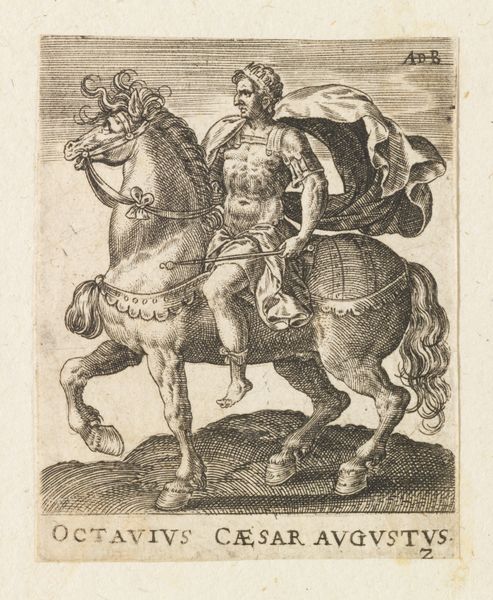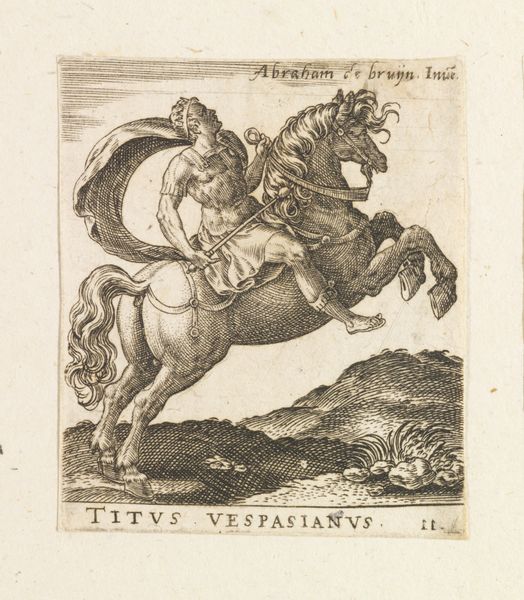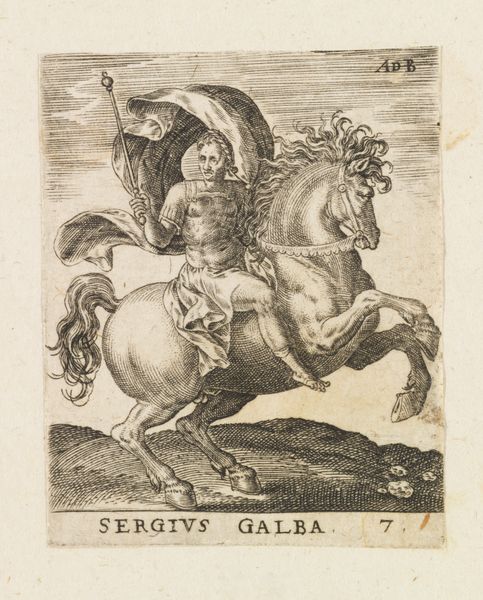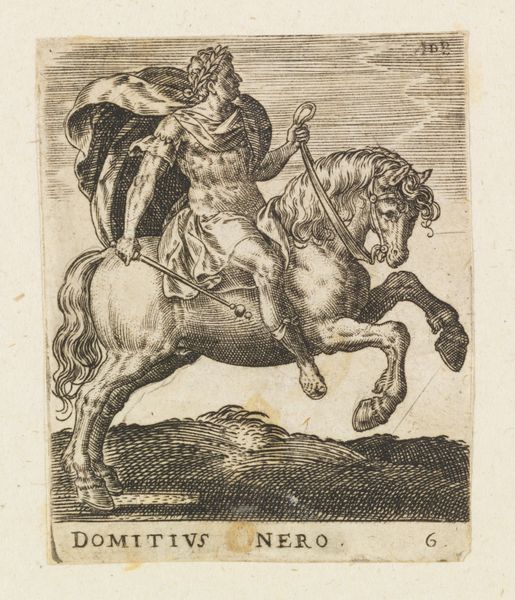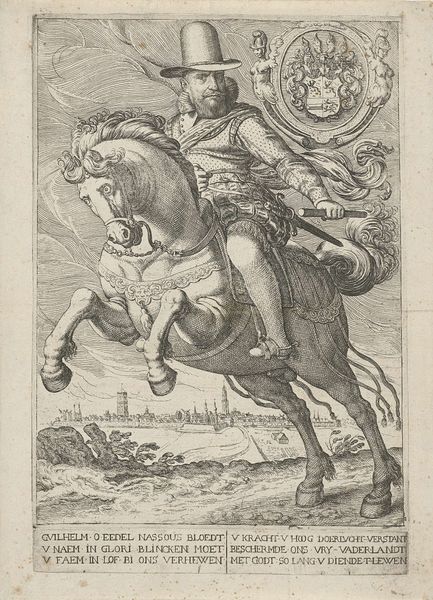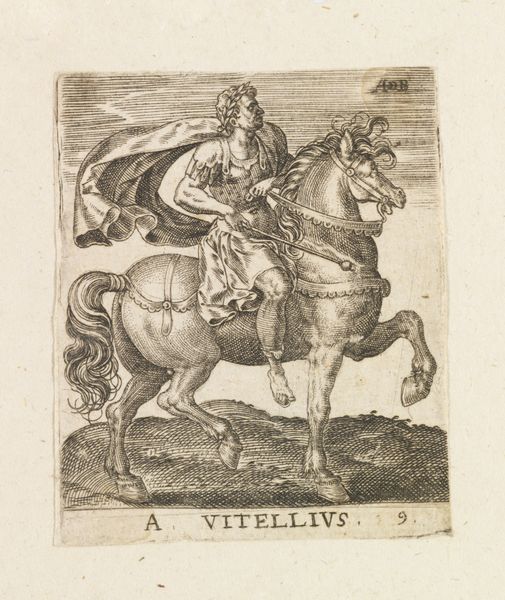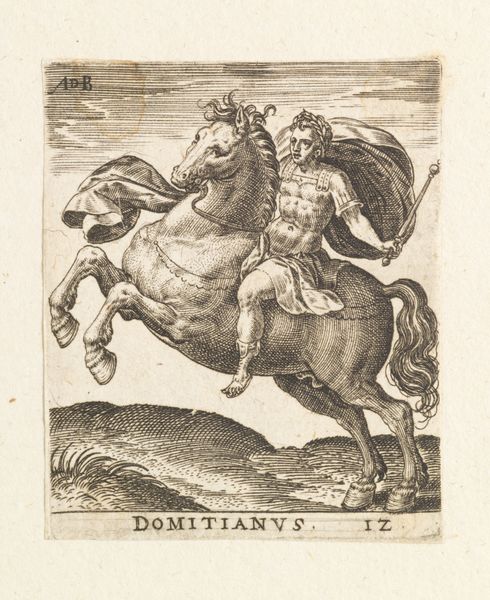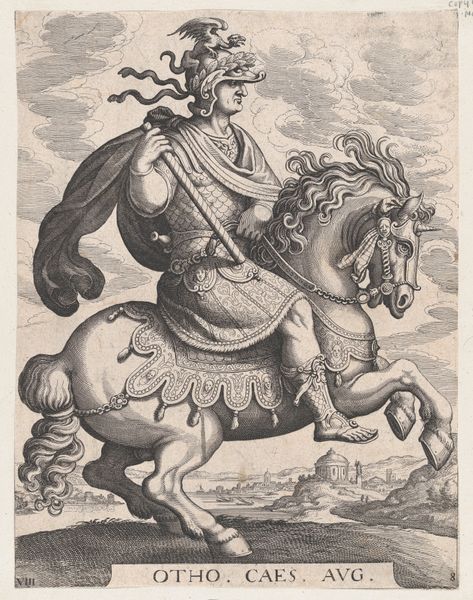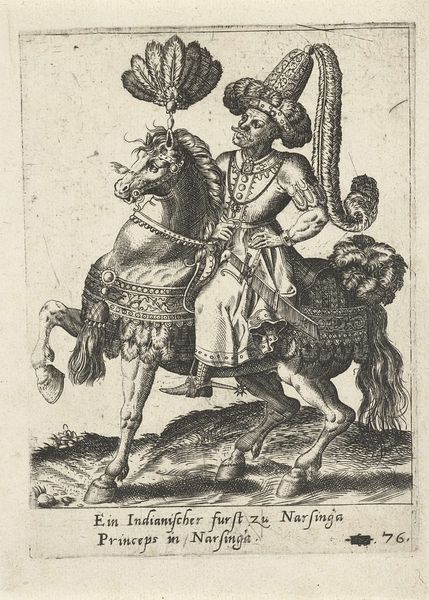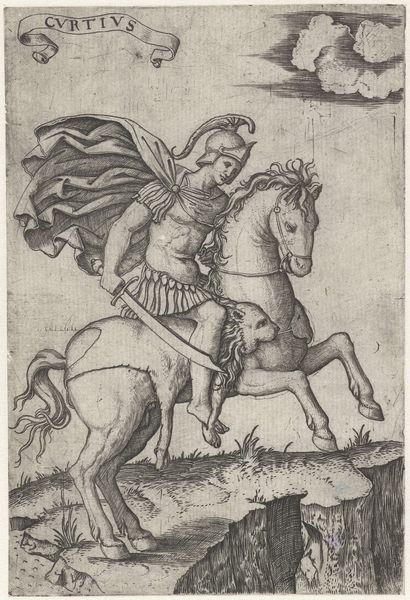
Claudius Tiberius Nero, from "Twelve Caesars on Horseback" 1560 - 1592
0:00
0:00
drawing, print, engraving
#
portrait
#
drawing
# print
#
figuration
#
ancient-mediterranean
#
horse
#
history-painting
#
engraving
Dimensions: Sheet: 2 1/4 × 1 7/8 in. (5.7 × 4.8 cm)
Copyright: Public Domain
Abraham de Bruyn created this engraving of Claudius Tiberius Nero, or Emperor Claudius, as part of a series called "Twelve Caesars on Horseback". Made in the late 16th century, this image reflects a renewed interest in classical antiquity during the Renaissance, which was driven by the rediscovery of ancient texts and artifacts, and the establishment of academies and museums. In this political climate, art became a powerful tool for rulers to legitimize their power. De Bruyn's engraving taps into this, depicting Claudius as a strong, virile leader on horseback, connecting the present to the grandeur of the Roman Empire. Understanding the cultural context and the institutional forces at play helps us interpret the role of art in shaping political ideologies and public perceptions during the Renaissance. Historians consult period documents, political tracts, and the biographies of artists and patrons. By exploring these, we gain insight into the ways in which art can reflect and reinforce the social structures of its time.
Comments
No comments
Be the first to comment and join the conversation on the ultimate creative platform.
